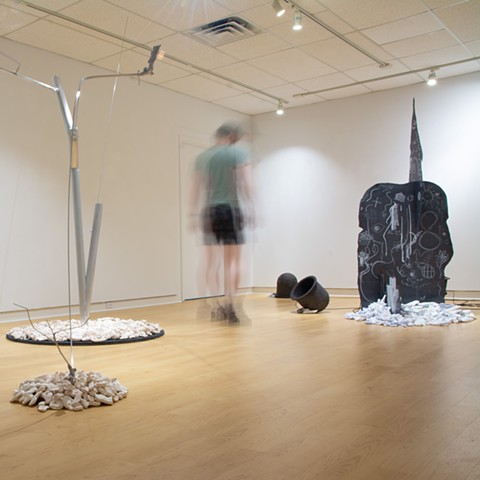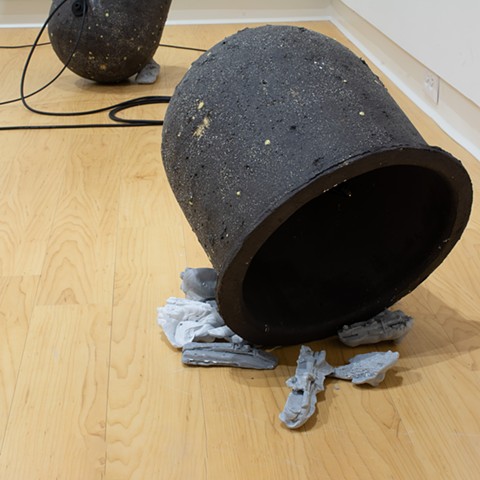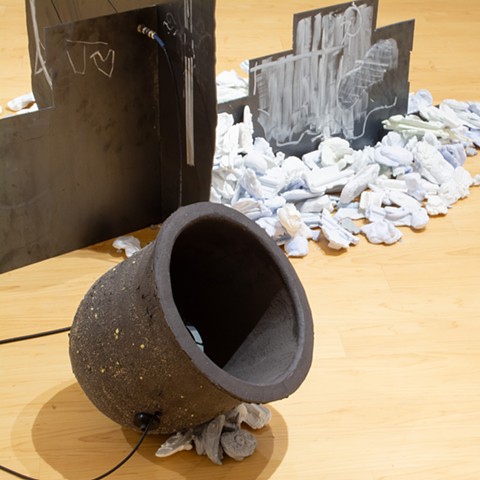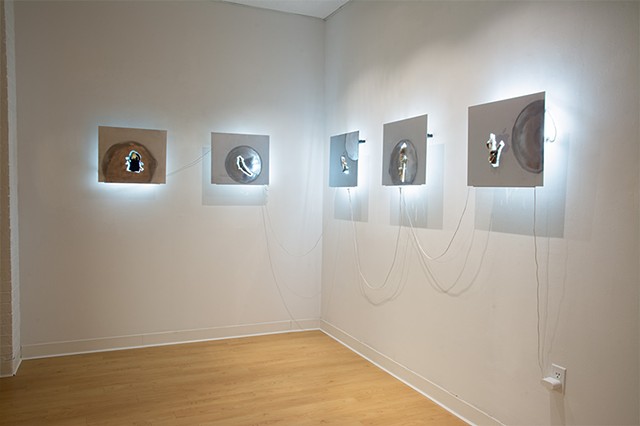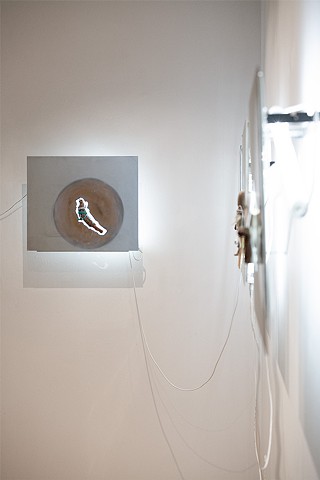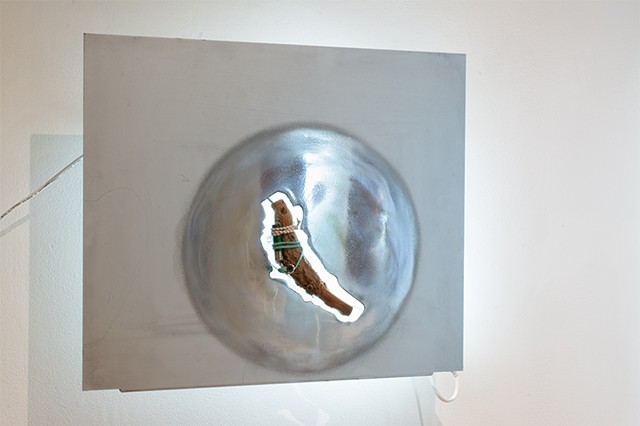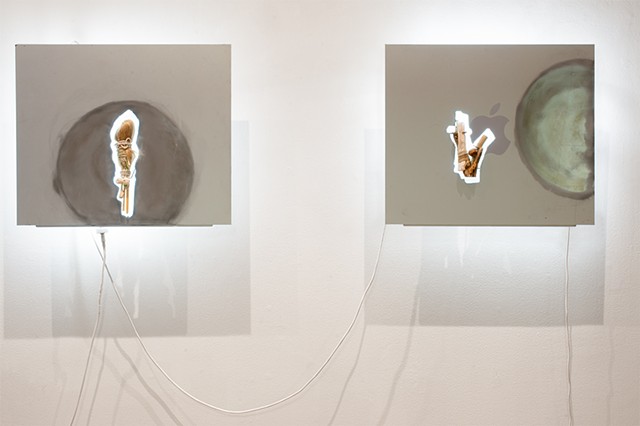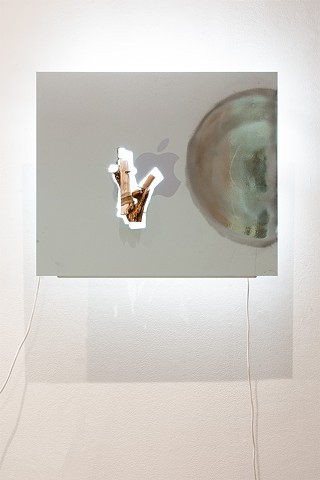Garden Edge
One may not expect artworks about gardens to substitute the pale tones of aluminum, steel, ceramic, and chalk for material depictions of lush green foliage and saturated floral blooms. In 4000 BCE the Sumerians parched arid climate inspired the irrigation and cultivation of the land between Euphrates and Tigris to cultivate the first garden, The Garden of Eden, of fig orchards and hunting grounds. The materials of Gardens Edge are evocative of the parched arid environments that inspired the garden as well as industrialized landscapes and technologies of the Anthropocene.
Edge connotes a subjective boundary. Edges can be a transition from the exterior of a resonating vessel to its interior, from the face of an of odd technologies encasement to its manifold interior. The edge of a garden may be considered the point where the cultivated landscape meets the unspoiled wild or industrial city. Acknowledging the gardens edge situates the human as somehow separate from the ecology of nature which I argue is not true as well as problematic in a myriad of ways.
The sculpture Third Nature creates a sonic landscape, broken into five parts, which mingle into a cohesive whole in the gallery. The steel form combines iconographic silhouettes of the architectural, monumental, and agricultural to create a central site for participation with the artwork. Through interacting each visitor makes a decision to deform a chalk object through its consumption to alter the imagery of the artwork and to interrupt the sonic landscape through the interjection of the markings amplified into the sonic landscape. Third nature is a sixteenth century term which identifies the garden world as distinct from the cultural landscape ( second nature) and the wilderness (first nature). Third Nature is dependent on the co-authorship of its audience, an act that I invite to implicate audience as active participants in an entangled world of things that move across the edges of first, second, and third natures.
Gardens Edge presents five artworks in a common landscape. These works address the synthetic, the natural, the technological. The exhibition places viewers into a visual, haptic, and sonic environment that is apart from nature while advocating for a less hierarchical relationship with it.
Gardens Edge is speculative and critical. In its viewing I ask for critical reflection on how we understand and structure our interactions with the enmeshed global ecology.
